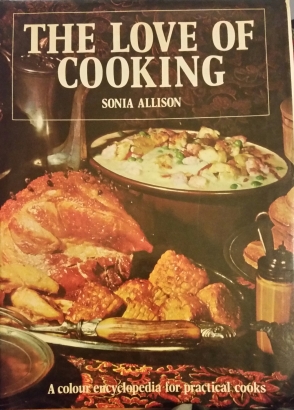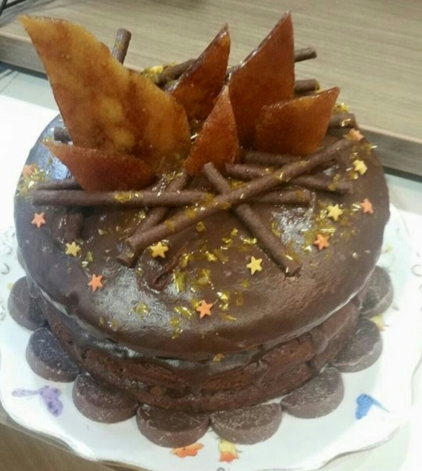Following the success of my first ever homemade meringues back in October last year, I’ve been keen to have a go at a full-blown pavlova. A sweet, snowy mountain adorned with smooth white cream and colourful fresh fruit, I’ve always thought pavlovas make a spectacular dessert, as well as being a nice lighter alternative to cake.
I thought if my attempt turned out like the delicious marshmallowy-on-the-inside-crisp-on-the-outside individual little clouds I made previously I’d be happy, but I was worried that this monster version would be more temperamental, and cook unevenly or shatter into sad little bits of chalk dust when baked. Luckily, I needn’t have had such concerns as it came out beautifully.
Although the topping combination was my idea, I can’t take credit for the meringue base here. My kitchen-whizz mum suggested I use her failsafe pavlova recipe from her trusty old copy of The Love of Cooking by Sonia Allison (from 1972!), and it proves that the oldies are certainly goodies as it worked perfectly. It’s definitely going to be be my go-to recipe in future!

Now here I must confess that I’m not a massive fan of berries, which are a staple of the quintessential pavlova. I love anything strawberry, raspberry or blueberry flavoured, but I just don’t enjoy the texture of the fruits themselves. However, I needed something that would cut through the sweetness of both the meringue and white chocolate, so I decided to use refreshingly sharp pineapple instead and I think it worked really well.
The finished article went down an absolute storm with my family, and I’ve definitely been bitten by the homemade meringue bug, so I’ll certainly be making more pavs in the future!

INGREDIENTS – serves approx. 6 people
For the meringue base:
- 4 egg whites
- 225g/8 oz caster sugar
- Quarter tsp cream of tartar
- 2 tsp cornflour
- 1 tsp vinegar (any kind will do)
For the topping:
- 1 x 36g sachet Dream Topping + milk as needed by the packet instructions (or 250ml/0.5 pint double cream)
- 1 x 432g can pineapple chunks or slices in juice, drained
- 50g/1.5 oz white chocolate, chopped into chunks
- A sprinkling of white and pink edible pearls (optional)
METHOD
For the meringue base:
- Pre-heat the oven to 130 degrees C (or 110 fan) and line a large flat baking tray with parchment paper.
- Place the egg whites in a very clean mixing bowl and whisk with the cream of tartar until white and frothy.
- Continue to whisk while adding the sugar a few tablespoons at a time until stiff, glossy peaks form – this will take a good few minutes (you should be able to hold the bowl of mixture over your head without it spilling out!)

- Gently fold in the cornflour and vinegar with a spatula (and don’t panic at the odd acidic smell like I did – this will disappear once it’s cooked, I promise!)
- Dollop the mixture in a rough circle on the baking parchment, ensuring it’s in a thick layer so you can’t see the paper through it at any point.
- Place in the oven and bake for around 1-1.5 hours, until a crisp shell has formed and the meringue is very slightly golden on the top but mostly white.
- When cooked, remove from the oven and leave to cool.
For the topping:
- Prepare the Dream Topping (or cream) according to the packet’s instructions – it should be quite thick and not runny – and then pile it on top of the meringue base.
- If using pineapple slices, cut them into small chunks and scatter on top of the Dream Topping, followed by the white chocolate chunks.
- Finish with a sprinkling of a few pretty pink and white pearls if you fancy, and serve immediately.












